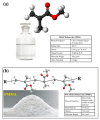Polymethyl Methacrylate-Based Bone Cements Containing Carbon Nanotubes and Graphene Oxide: An Overview of Physical, Mechanical, and Biological Properties
- PMID: 32629907
- PMCID: PMC7407371
- DOI: 10.3390/polym12071469
Polymethyl Methacrylate-Based Bone Cements Containing Carbon Nanotubes and Graphene Oxide: An Overview of Physical, Mechanical, and Biological Properties
Abstract
Every year, millions of people in the world get bone diseases and need orthopedic surgery as one of the most important treatments. Owing to their superior properties, such as acceptable biocompatibility and providing great primary bone fixation with the implant, polymethyl methacrylate (PMMA)-based bone cements (BCs) are among the essential materials as fixation implants in different orthopedic and trauma surgeries. On the other hand, these BCs have some disadvantages, including Lack of bone formation and bioactivity, and low mechanical properties, which can lead to bone cement (BC) failure. Hence, plenty of studies have been concentrating on eliminating BC failures by using different kinds of ceramics and polymers for reinforcement and also by producing composite materials. This review article aims to evaluate mechanical properties, self-setting characteristics, biocompatibility, and bioactivity of the PMMA-based BCs composites containing carbon nanotubes (CNTs), graphene oxide (GO), and carbon-based compounds. In the present study, we compared the effects of CNTs and GO as reinforcement agents in the PMMA-based BCs. Upcoming study on the PMMA-based BCs should concentrate on trialing combinations of these carbon-based reinforcing agents as this might improve beneficial characteristics.
Keywords: bone cements; carbon; polymethylmethacrylate; reinforcement materials.
Conflict of interest statement
The authors declare that they have no competing/financial conflict of interest in this paper.
Figures








References
-
- Deb S. Acrylic Bone Cements for Joint Replacement, in Biomedical Composites. Elsevier Woodhead Publishing; Amsterdam, The Netherlands: 2010. pp. 210–233.
-
- Dunne N., Ormsby R.W. In: MWCNT Used in Orthopaedic Bone Cements. Naraghi M., editor. InTech Open Access Publisher; London, UK: 2011. pp. 337–342.
-
- Dunne N., Clements J., Wang J. Joint Replacement Technology. Elsevier Woodhead Publishing; Amsterdam, The Netherlands: 2014. Acrylic cements for bone fixation in joint replacement; pp. 212–256.
-
- Kleinschmitt O. Plexiglas zur deckung von schdellcken. Chirurgie. 1941;13:273.
Publication types
LinkOut - more resources
Full Text Sources

